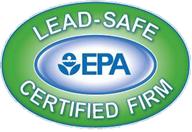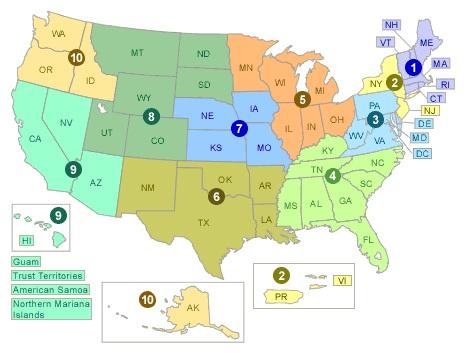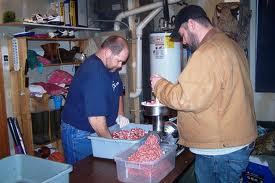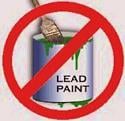Information, Resources and Instructions About Working Lead-Safe
 The following is a partial list of links you can use to find information, resources and instructions for working lead safe. This information can be used by renovators, landlords, tenants and homeowners. I suggest checking them out. I found many good work practices, ideas and options to consider that were not offered or discussed in the required Certified Renovator Training class. Renovators may also find some of the documents valuable to share with prospects and clients when discussing pre-1978 renovations and or if the prospect is considering doing all or part of the work themselves.
The following is a partial list of links you can use to find information, resources and instructions for working lead safe. This information can be used by renovators, landlords, tenants and homeowners. I suggest checking them out. I found many good work practices, ideas and options to consider that were not offered or discussed in the required Certified Renovator Training class. Renovators may also find some of the documents valuable to share with prospects and clients when discussing pre-1978 renovations and or if the prospect is considering doing all or part of the work themselves.
If you know of other links to value information worth sharing please leave a comment at the end of this blog and I will add them to the list below.
 Links to Information,Resources and Instructions About Working Lead-Safe
Links to Information,Resources and Instructions About Working Lead-Safe
A Guide to working safely with residential lead paint
Field Guide for Painting, Home Maintenance and Renovation Work
How to Safely Change a Lead Contaminated HEPA Vac Bag
OSHA standards for cleaning a respirator apply to EPA RRP work
What do I need to know about Respirators when doing EPA RRP work?
What You Don’t Know About Respirators and Probably Would Rather Not Know
Restricted Practices and Prohibited Practices under the EPA RRP Rule
RRP Demo and Asbestos Removal Share Similar Risks and Work Practices
A Fast, Clean and Safe Way to Remove Lead Paint
How to Safely Use a HEPA Vacuum and Change a Contaminated Bag

 Looking for accurate information about the EPA RRP rule?
Looking for accurate information about the EPA RRP rule?  A recent example of this related to lead in construction is discussed in an
A recent example of this related to lead in construction is discussed in an  At the San Juan National Historic Site project eight alleged serious violations resulted from a lack of medical evaluations and fit-testing for employees using respirators, improper storage of compressed gas cylinders, no eye-wash stations where employees worked with corrosive products, an uncovered electrical receptacle, a lack of hazard communication training and material data sheets of the products used, and not implementing hazard communication and written respiratory protection programs.
At the San Juan National Historic Site project eight alleged serious violations resulted from a lack of medical evaluations and fit-testing for employees using respirators, improper storage of compressed gas cylinders, no eye-wash stations where employees worked with corrosive products, an uncovered electrical receptacle, a lack of hazard communication training and material data sheets of the products used, and not implementing hazard communication and written respiratory protection programs. “There is a new sheriff in town. Make no mistake about it; the Department of Labor is back in the enforcement business… Under my watch, enforcement of labor laws will be intensified to provide an effective deterrent to employers who put their workers’ lives at risk.”
“There is a new sheriff in town. Make no mistake about it; the Department of Labor is back in the enforcement business… Under my watch, enforcement of labor laws will be intensified to provide an effective deterrent to employers who put their workers’ lives at risk.”

 The information on and the format of each page varies. Some of the information found on the various pages may include:
The information on and the format of each page varies. Some of the information found on the various pages may include:


 The EPA created the RRP Rule because lead is found in many products in homes. Asbestos was also used frequently in homes in similar products such as paint, floor tiles, roofing tiles, and water pipes. It is safe to assume that where lead is present, asbestos is also near. Asbestos is only a serious health hazard when it is disturbed, which means during renovations the fibers may be set airborne and inhaled by workers.
The EPA created the RRP Rule because lead is found in many products in homes. Asbestos was also used frequently in homes in similar products such as paint, floor tiles, roofing tiles, and water pipes. It is safe to assume that where lead is present, asbestos is also near. Asbestos is only a serious health hazard when it is disturbed, which means during renovations the fibers may be set airborne and inhaled by workers.  Assume asbestos is present if you are working with an older home if it has not been tested by the owners
Assume asbestos is present if you are working with an older home if it has not been tested by the owners One big reality of the current recession is the need for everyone to cut back their budgets. This holds true for most Americans, businesses and nonprofits. It has now also started to become a reality for our government. A recent discussion posted to LinkedIn includes a link to an article that is titled
One big reality of the current recession is the need for everyone to cut back their budgets. This holds true for most Americans, businesses and nonprofits. It has now also started to become a reality for our government. A recent discussion posted to LinkedIn includes a link to an article that is titled
 Doesn’t it make sense to concentrate funding on efforts that would prevent lead poisoning to begin with, rather than justify that money from the government is needed to help those already poisoned? Why is it they are they still getting poisoned? Plus, it would probably be much less expensive to prevent the problem than it would be to deal with it after it has occurred.
Doesn’t it make sense to concentrate funding on efforts that would prevent lead poisoning to begin with, rather than justify that money from the government is needed to help those already poisoned? Why is it they are they still getting poisoned? Plus, it would probably be much less expensive to prevent the problem than it would be to deal with it after it has occurred.
 Workers with an occupational exposure to lead need to inform their doctors in order to give them all the background needed for an adequate evaluation of symptoms as possibly related to lead exposure.
Workers with an occupational exposure to lead need to inform their doctors in order to give them all the background needed for an adequate evaluation of symptoms as possibly related to lead exposure. Nervous system and kidney damage.
Nervous system and kidney damage. Miscarriages
Miscarriages High blood pressure
High blood pressure Digestive problems
Digestive problems International and domestic studies have shown elevated lead levels in humans consuming large and small game hunted with lead ammunition. Studies prove that regular consumption of game meat in adults and children found elevated blood lead levels compared with background levels, especially among children.
International and domestic studies have shown elevated lead levels in humans consuming large and small game hunted with lead ammunition. Studies prove that regular consumption of game meat in adults and children found elevated blood lead levels compared with background levels, especially among children. 


 as described within a scope of work for the project, test lead free by a Certified Risk Assessor, Lead Inspector or Certified Renovator
as described within a scope of work for the project, test lead free by a Certified Risk Assessor, Lead Inspector or Certified Renovator
 With spring only a short time away, contractors will soon be working outdoors again in the northeast. This will make the work they do and the work practices they use much more visible to OSHA and EPA. Consider yourself warned and get ready. In additional to the work practices required under RRP rules, there are plenty of OSHA regulations and requirements as well. If you don’t have written safety plans for the work your business performs, or if you have not provided the required safety training and equipment for your workers, you might become an easy target.
With spring only a short time away, contractors will soon be working outdoors again in the northeast. This will make the work they do and the work practices they use much more visible to OSHA and EPA. Consider yourself warned and get ready. In additional to the work practices required under RRP rules, there are plenty of OSHA regulations and requirements as well. If you don’t have written safety plans for the work your business performs, or if you have not provided the required safety training and equipment for your workers, you might become an easy target. 


